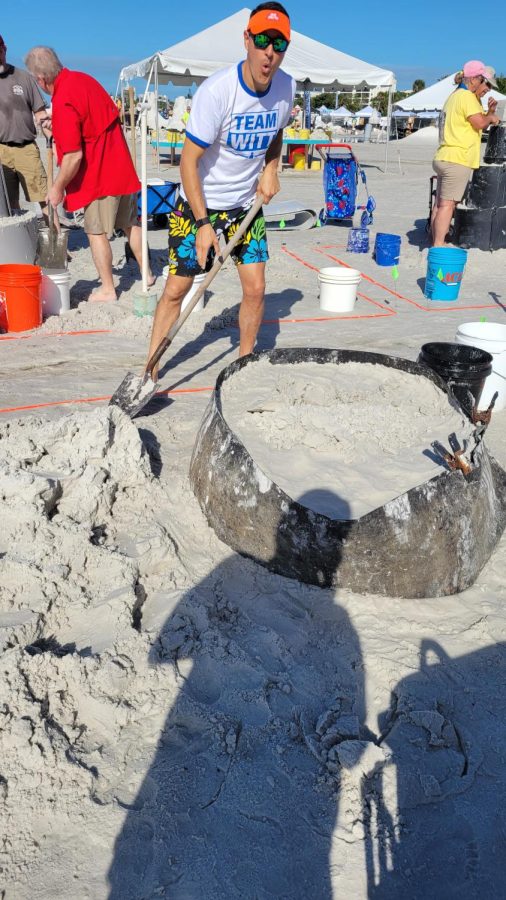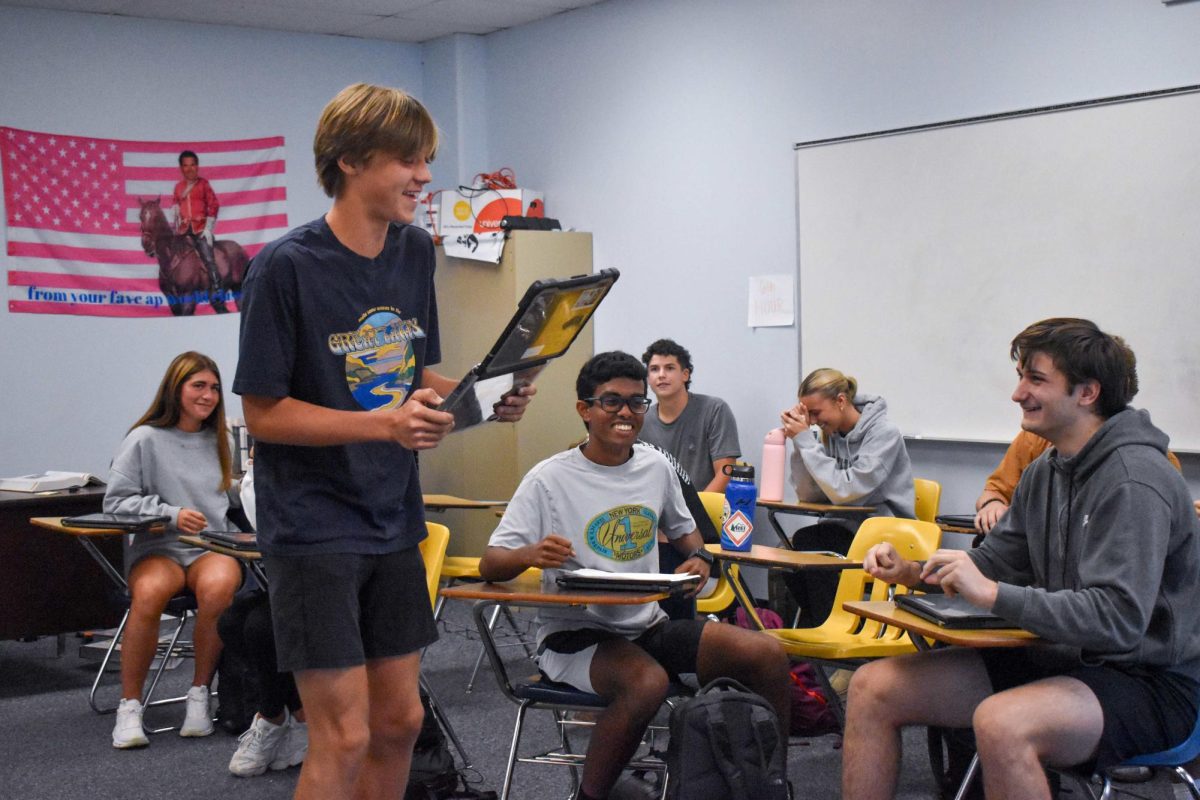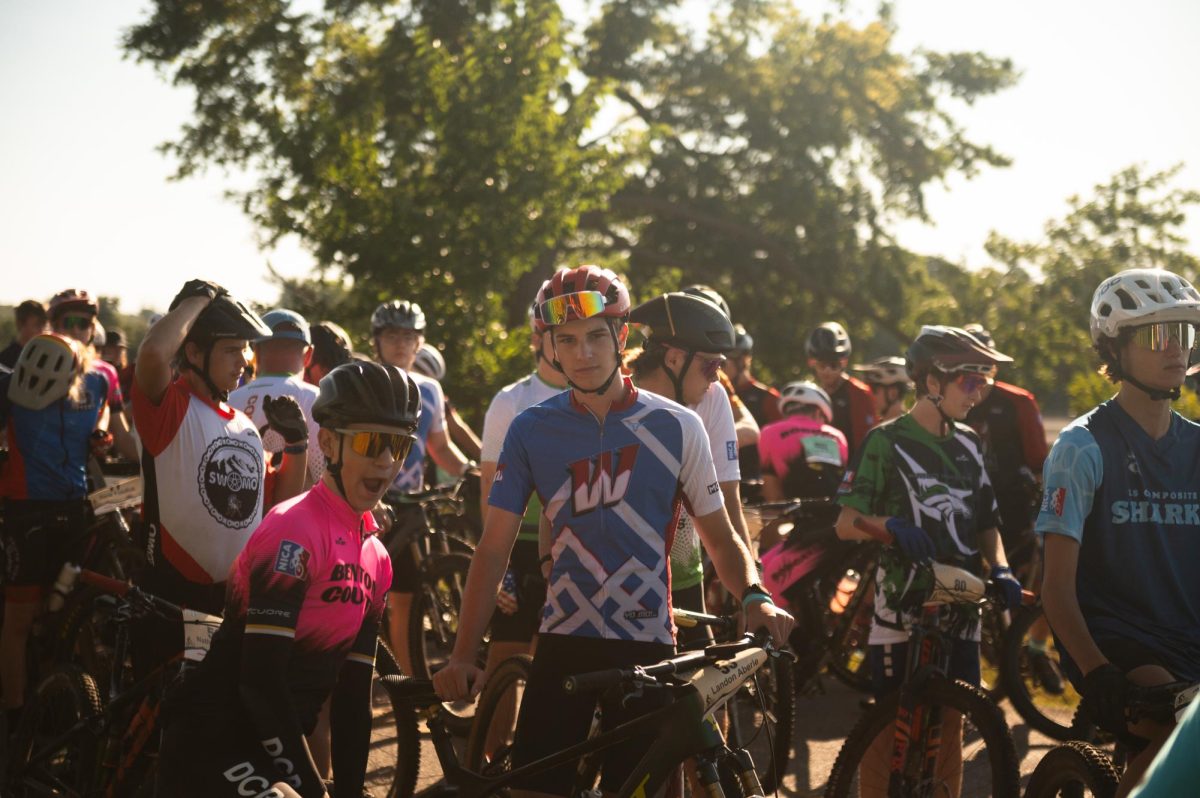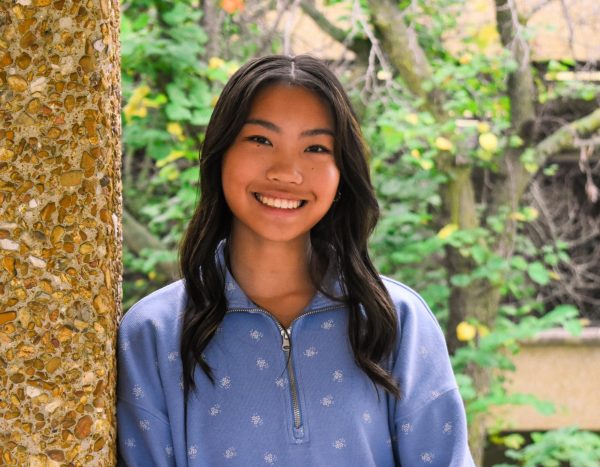Strolling along the beautiful, white sand shores of the top beach in America, Siesta Key, Fla., revisiting their honeymoon destination from 24 years ago, an elaborate sandcastle caught English ASC Kristen Witt’s attention. This was not a typical, plastic bucket-made sandcastle. This one stood 5 feet tall along the shore, beginning to reveal intricate designs skillfully carved into the sandy sides. That was the moment they were introduced to a new pastime: building sandcastles.
Witt and her husband, Aaron Witt, decided to begin lessons in sandcastle building. After finding a master builder — or a sand-sculpting instructor — Kristen and Aaron only had one lesson before participating in two competitions over two years. They both were held at the Siesta Key Crystal Classic International Sand Sculpting Festival, which, fortunately, as a cross county coach, happened the weekend between state cross country championships and the cross country banquet.
“We were walking on the beach, and we happened to see a big sandcastle. I [thought] that it would be cool if we could build those big, monster, awesome sandcastles. Next thing I know [Aaron] had a sandcastle builder come meet us down on the beach,” Kristen said. “When we were working with our master builder, he said, ‘you guys are really good and should enter the competition.’ My husband was excited and ready to go, and I said, ‘okay,’ as long as it didn’t conflict with cross country because of priorities. So, we [competed] last year [in 2021]. We did not win, but we still had fun. We went back [in 2022] and are improving our skills and having a good time doing it.”

The building process starts with forms — big sheets of plastic varying in height — and with the correct ratio of sand and water poured into them, forms create the foundation for the rest of the sand sculpture. Around four hours are spent meticulously stacking forms, one after another, until a desired height is reached. Then, Kristen’s favorite part of the process detailing. The equipment for detailing these structures consist of tools designed for clay: a melon ball scooper, a pencil, a straw and a feather duster. With nothing but sand, water and these supplies at their disposal, the couple began at 9 a.m., working until 3 p.m., decorating their entire 8-by-8-foot plot.
“We built the first [form] and then the second, and the first one was wonky and looked like a giant jelly bean. It wasn’t this nice cylinder and was wet,” Aaron said. “At that point, we needed a [different] idea, and Kristen said, ‘Oh, this kind of looks like a steamboat or a tugboat.’ It had the bow shape of the front [of a boat]. So we talked about that for a little bit, she found a picture of a boat, and that ended up being our idea.”
Even with their newly-formed plan, an unexpected crisis arose. Kristen and Aaron had to think on their feet about how to recover. Sometimes, a section can collapse abruptly due to too little or too much sand. If the entire sculpture collapses, it is over.
“The back part of our tugboat collapsed, [which] just happens, and to try to rebuild was very hard. Our tugboat shrunk dramatically because we needed a back end on it, so it was a bummer,” Kristen said. “There was nothing we could do. We couldn’t piecemeal it back together. We just had to work around it and keep going, and that’s what’s hard, is that we can’t plan for that kind of stuff.”
An additional interference to the competition was spontaneous storms mid-build. Rain pelted down, defacing sculptures and potentially knocking them down entirely. There was nothing Kirsten and Aaron could do: no pauses, umbrellas or extra time was allowed. What else could they do but hope and keep going?
“They have pop-up storms all the time. One minute we’re there building, and the next minute, rain is pouring down on us and our castle. We just have to work around that. There’s nothing we can do. That happened twice last year and this year,” Kristen said. “We try to do the best we can to smooth over what area the rain hits, but we’re out in the elements on our own, hoping for the best.”
Despite nature, the two finished and received a compliment from their coach for experimenting beyond sandcastles. Looking back on their process, Aaron credits their synergy to an unconventional method of communication: drawing in the sand.
“We’re used to doing stuff together, but it’s a different ballgame when you have to collaborate and compromise on ideas. At one point, we were trying to figure out what we would make. She was like, ‘No, I want you this way,’ and I was like, ‘Well, I want to do it this way.’ That’s where I said, ‘let’s draw in the sand,’ and [we] took turns and drew together. We both kept going and created the plan that we liked, and that came from us collaborating instead of trying to argue or force our opinion on one another,” Aaron said. “Sometimes drawing out ideas is better than trying to talk about them because words don’t always represent accurately what [someone is] saying. Even if it does, the person listening might not clearly understand the same message. So draw it together, [and] work it out so that you can see and visualize it. Then your ideas come together.”
Drawing in the sand was just one of many ideas out there. Most participants came prepared with a plan and perhaps more experience, but a few went as far as to keep their plans in a binder, printed and laminated. Kristen and Aaron, however, went in with a vague idea at this past year’s competition, unaware of most competitors’ preparation. While they may not prepare an entire binder for next time, the biggest lesson they took away from this past year’s competition was to prepare and, if time allows, practice.
“We knew we couldn’t compete with them; we had to go with plan B and try something different to see if we could pull it off. When we first arrived, we said we would build a sandcastle. Then we looked around and were [thinking], ‘We’re out-castle’d here.’ So we built something different this year instead, and it didn’t turn out quite how we wanted. I think we need to have a bigger, better plan next year and maybe a few more lessons,” Kristen said. “To come up with something on the fly and make it work; I‘m always up for a good challenge. But we did not have a plan before walking in there, which is not like us. Usually, we come in, and we’re overprepared, [but] it was just too busy this year. Always have a plan. If you fail to prepare, you prepare to fail. For real.”
Just as their shirts displayed, Kristen and Aaron spent “24 years playing in the sand,” even before they knew how to build giant sandcastles. Looking forward to plenty more years together on the white sand of Siesta Key beach, they plan to continue participating in this fun competition.
“We first went to Siesta Key on our honeymoon many years ago. During that time, my husband buried me in the sand, making me have a mermaid tail. Since then, we’ve been playing in the sand, but our sculptures have become more elaborate and detailed. No matter where we are, what we’re building, we always have a good time,” Kristen said.

![With the sun setting in the background, English ASC Kristen Witt and her husband, Aaron Witt, wear matching team shirts for the Siesta Key Crystal Classic International Sand Sculpting Festival. In 2021, they ran out of time for matching team shirts and instead wore ‘West is Best’ shirts, while in 2022, they made custom couple shirts. “This year, [Aaron] decided to have them made. On the front, it said ‘Team Witt,’ and on the back, it had ‘24,’ for how many years we have been married, and it [reads], ‘24 years of playing in the sand together,’” Kristen said.](https://pwestpathfinder.com/wp-content/uploads/2023/02/20221112_174031-1-Edited-900x675.png)




![Freshman Daphne Stokes looks at a table with Veterans Day flyers and information on Nov. 11. Stokes, along with other West High students, like senior Alexander Lewinski, passed by the table in the cafeteria with army recruitment information and giveaways for students to observe during lunch. “Talking with [the recruiters] has definitely helped me [find] where I wanted to go, more than anything else,” Lewinski said.](https://pwestpathfinder.com/wp-content/uploads/2025/11/DSC_1227-2-1200x800.jpg)
![Helping a customer, print room assistant Gretchen Williams operates her booth at the West High Craft Fair from Oct. 25-26. This was Williams’ first time participating in the Craft Fair with her new craft shop, Gs Beaded Boutique. “People have always said, over the years, ‘you should open something.’ [I replied that] I would rather just make [my crafts as] gifts for people. I just started [the online store] up, and it's been okay. I'm always surprised [by] how many views I get and [the] people from different states buying things; somebody from Alaska bought something the other day.”](https://pwestpathfinder.com/wp-content/uploads/2025/11/DSC0451-2-1200x799.jpg)
![Gesturing toward the club’s name on the board, Global Youth Aid co-president year Daniah Alsagheer discusses upcoming service projects with members during a meeting on Oct. 30. “We might be one club at one school, but together, we’re [part of] something much bigger,” Alsagheer said.](https://pwestpathfinder.com/wp-content/uploads/2025/11/DSC00949-1200x800.jpg)
![Focused on providing exceptional service, sophomore Darsh Mahapatra carefully cleans the door of a customer’s car. Mahapatra has always believed his customers deserve nothing less than the best. “[If] they’re trusting us with their car and our service, then I am convinced that they deserve our 100 percent effort and beyond,” Mahapatra said.](https://pwestpathfinder.com/wp-content/uploads/2025/10/DSC_0018-1200x800.jpg)
![Sophomore Aleix Pi de Cabanyes Navarro (left) finishes up a soccer game while junior Ava Muench (right) warms up for cross country practice. The two came to Parkway West High School as exchange students for the 2025-2026 school year. “The goal for the [exchange] program is to provide opportunities for both Parkway students and our international exchange students to learn about other cultures, build connections and become confident, capable, curious and caring — Parkway’s Four C’s — in the process,” Exchange Program Lead Lauren Farrelly said.](https://pwestpathfinder.com/wp-content/uploads/2025/10/Feature-Photo-1200x800.png)

![Gazing across the stage, sophomore Alexis Monteleone performs in the school theater. The Monteleone family’s band “Monte and the Machine” has been releasing music since 2012, but Alexis started her own solo career in 2024 with the release of her first single, Crying Skies. “My whole family is very musical, [and I especially] love writing [songs with them],” Monteleone said.](https://pwestpathfinder.com/wp-content/uploads/2025/09/DSC7463-1200x798.jpg)
![Amid teaching a lesson to her AP Calculus BC class, Kristin Judd jokes alongside her students in their funny remarks. Judd has always enjoyed keeping the mood light in her classroom, along with on the volleyball court. “[I enjoy] that side talk where you see [or] overhear a conversation and chime in, or somebody says something funny,” Judd said.](https://pwestpathfinder.com/wp-content/uploads/2025/09/image-1200x730.jpg)
![Eyeing the ball, junior Ella McNeal poses for her commitment pictures at Clemson University. McNeal’s commitment comes after months of contact with top Division 1 soccer programs. “ It has taken a lot to get to where I am, but I know that [what] I've already been through is just the beginning, and I can't wait for what is to come,” McNeal said.](https://pwestpathfinder.com/wp-content/uploads/2025/09/IMG_4926-1200x900.jpeg)
